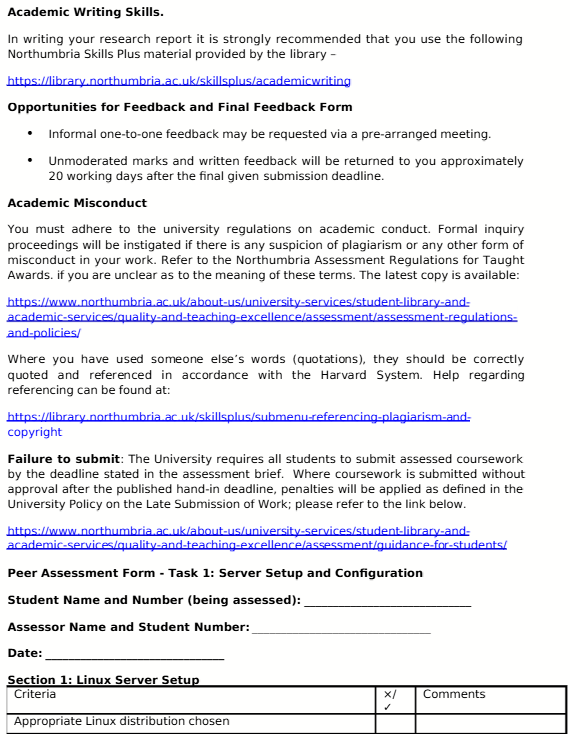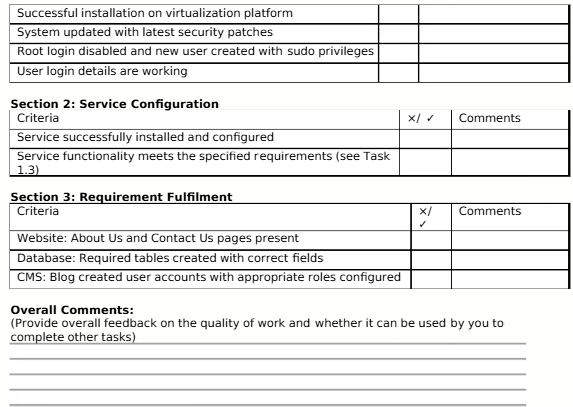KV6009 Advanced Security Assessment Component 2, Semester 2, 2024-25 | NU
KV6009 Learning Outcomes
The learning outcomes (LOS) for this module are: –
L01 – Understand number systems, mathematical functions, and basics of cryptography.
L02-Design and develop secure networks and systems, incorporating threat modelling and security testing throughout the development lifecycle. Design and develop the cryptographic mechanism for public key infrastructure.
L03 – Practically test and implement encryption and decryption cryptographic functions, methods and protocol security mechanisms and protocols to safeguard the critical infrastructures of organisations.
L04 – Practically apply and validate various cryptographic security protocols and systems by identifying vulnerabilities, performing manual/automated penetration testing, and evaluating results using various tools and methods and perform manual/automated cryptanalysis using logical methods and automated tools.
L05 – Cultivate a curious mindset through independent exploration of emerging cybersecurity trends, technologies, and their potential impact on society. Work as a team to develop a group project identifying equality, diversity and multicultural issues while demonstrating research and enquiry skills.
This assessment addresses learning outcomes LO2, LO3, LO4 and LO5.
Instructions for the Assessment
XYZ Corporation is a medium-sized organisation that relies heavily on IT services to support its operations. They are in the process of upgrading their infrastructure and need to ensure their services are configured securely to protect against potential threats. You have been hired as IT consultants to assist XYZ Corporation in configuring its services securely. The Company has identified the following areas as priorities:
- Web Service: The company’s website is a crucial platform for customer interaction and sales.
- Content Management Service (CMS): They would like the company’s website to be powered by a CMS. This allows the employees to update the web content without technical knowledge.
- Database Service: XYZ Corporation stores sensitive customer and financial data in a database.
Task 1: Set up and Configuration
1. Choose a Linux server distribution that is appropriate for the chosen service.
a. Install the chosen Linux server distribution on a selected virtualisation platform (VirtualBox or VMware Workstation Pro)
b. Once the Linux distribution is installed, ensure it is up to date with the latest security patches and updates.
c. Disable root login and create a new user with sudo privileges. The new username must be your name, and the password should be your student number.
d. Demonstrate that you can access the server via SSH using another client instance.
2. Choose one of the service categories below to focus on. For the chosen category, you may choose any of the following corresponding technologies (or choose any other software that you are comfortable working with) and configure it within your Linux server distribution.
a. Web Service: Apache (apache2), Nginx (nginx)
b. Database Service: MySQL (mysql-server), PostgreSQL (postgresql)
c. CMS: WordPress (wordpress), Drupal (drupal)
3. Ensure your chosen services follow the given requirements criteria.
a. Website: About Us Page, Contact Us Page (You do not need to worry about populating these pages with content, and you can take the code from other sources)
b. Database: Create an appropriate database/s and add the following tables to that database: Products Table (ID, name, price), Customers Table (ID, name, email, address).
c. CMS: Create a blog (You do not need to worry about populating these pages with content, and you can take the code from other sources), Configure user accounts with appropriate roles (At least two)
4. Use a client machine to show that the service you have configured is working correctly.
a. Use a web browser on the client machine to access the website.
b. Use a database client application (e.g., MySQL Workbench, pgAdmin) on the client machine to connect to the database server.
c. Use a web browser on the client machine to access the CMS admin dashboard.
For this assessment, you will be assigned a classmate, and you must share your final configuration with them. Once you receive the final configuration from the chosen peer, you will then perform Tasks 2 and 3 on their configured server instances.
Task 2: Penetration Testing Tasks
1. Choose an appropriate methodology (Black box, White box or Grey box) for carrying out penetration testing tasks. Clearly explain in your documentation why you chose this methodology.
2. Information Gathering: Gather information about the target service and OS (open ports, services running, versions).
3. Vulnerability Scanning: Use any vulnerability scanner to scan for known vulnerabilities in the identified service.
4. Attempt to exploit the service or software. Record any successful or unsuccessful exploitation attempt.
5. Provide a threat modelling risk assessment for the VM Instance. Include the following information on the risk assessment: What service you tested, what can go wrong in the given configuration, what can you do to improve the security of the service, and how will you rate the configuration that was given to you.
Task 3: Security Configuration Tasks
1. Choose any of the following security measures based on the service your peer has configured.
a. Web Service
- Enable HTTPS using a self-signed SSL certificate.
- Disable directory listing and remove server banners.
b. Database Service
- Encrypt sensitive data at storage and in transit.
- Implement database logging and auditing for security monitoring.
c. Content Management Service
- Disable unused plugins and themes and update to the latest versions. Implement security plugins for additional protection (e.g., anti-spam, firewall).
2. Install the iptables and configure the rules according to the following requirements. You do not have to show that the rules are working.
- Allow only inbound SSH (Secure Shell) traffic.
- Block traffic from the IP address 192.168.3.1.
- Accept traffic from the network range 192.168.4.0/24.
- Just for the sake of testing and troubleshooting, allow the 10.0.0.4 to ping the server, and vice versa.
- Implement a security mechanism where a sequence of specific packets “knocks” to open a port. In your case, allow knocks on port numbers 7000,8000,9000, which will open port 22 temporarily.
Achieve Higher Grades with KV6009 Assignment Solutions
Order Non-Plagiarised Assignment
Submission
What You Need to Submit: VM Configuration
1. On 31 March 2025, you will share your VM configuration with your peer. No extensions are provided for this submission.
2. On the 7th of April 2025, you will submit a peer evaluation form to Blackboard, which evaluates the instance you received from your peer. No extensions are provided for this submission.
What You Need to Submit: Demonstration Video
3. Document the server setup, service configuration, penetration testing and security configuration through screen recordings accompanied by a voice-over explanation.
4. Upload the recorded videos with your report on the day of submission.
5. Failure to submit the video or the absence of your audio commentary in the video will result in no marks being awarded for the relevant sections.
6. There’s no need to enhance the video with additional effects.
What You Need to Submit: Research Report
Your final report should be no more than 2000 words. Suggested structure for report:
1. Methodology
a. Simulation Setup: Describe the setup in detail. This includes the server setup and software used, and any other relevant technical specifications.
b. Penetration Testing: Explain how information about the target was collected. State the vulnerability scanner chosen for this task and justify why this scanner was selected. Describe how the scanner was configured.
c. Identify the specific vulnerability chosen for exploitation. Explain the reasoning behind selecting this vulnerability. Specify whether the Metasploit framework or a custom exploit was used. If using Metasploit, mention the module name. If using a custom exploit, briefly describe it. Provide an overview of the steps taken to execute the exploit.
2. Results/Discussion
a. Analysis of penetration testing Stages: Break down the testing into its different stages and present the results for each stage. Briefly explain the results of the reconnaissance phase, highlighting open ports, running services, and their versions.
b. Summarise the vulnerabilities identified by the scanner. Prioritise the vulnerabilities based on their severity or potential impact.
c. Describe the outcome of the exploitation attempt. Was it successful? If so, what level of access was gained? If not, what were the potential reasons?
3. Countermeasures/Recommendations
a. Specific Countermeasures configured: Detail each security measure implemented, referencing the options provided (a-d). Provide any relevant commands or configuration settings. Explain how each measure improves the overall security posture of the service.
b. List each iptables rule that was implemented, including the full command syntax and a brief explanation of its purpose.
c. Preventative Strategies: Recommend further strategies to secure the system from attacks in the future.
Your final paper should be no more than 2000 words (excluding references). The marking scheme showing the assessment criteria and mark allocation for both parts is shown at the end of the assignment brief.
General Guidance
The guidance below applies to both parts of the assignment. Please read this guidance carefully.


